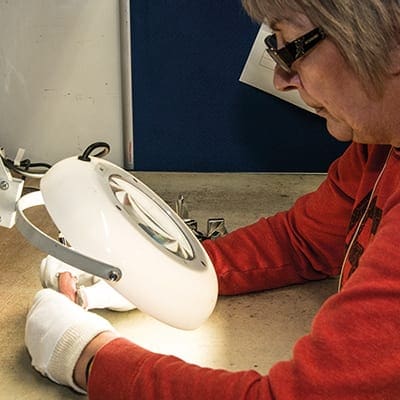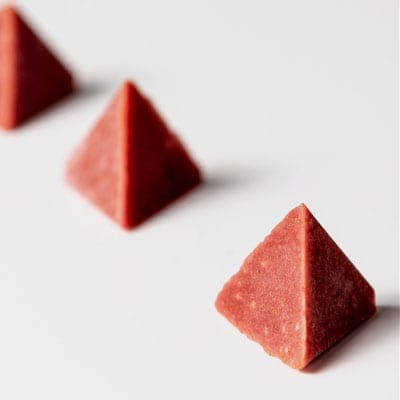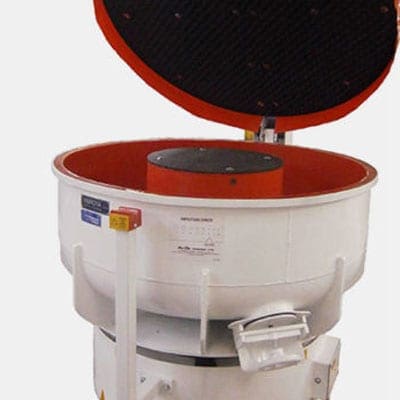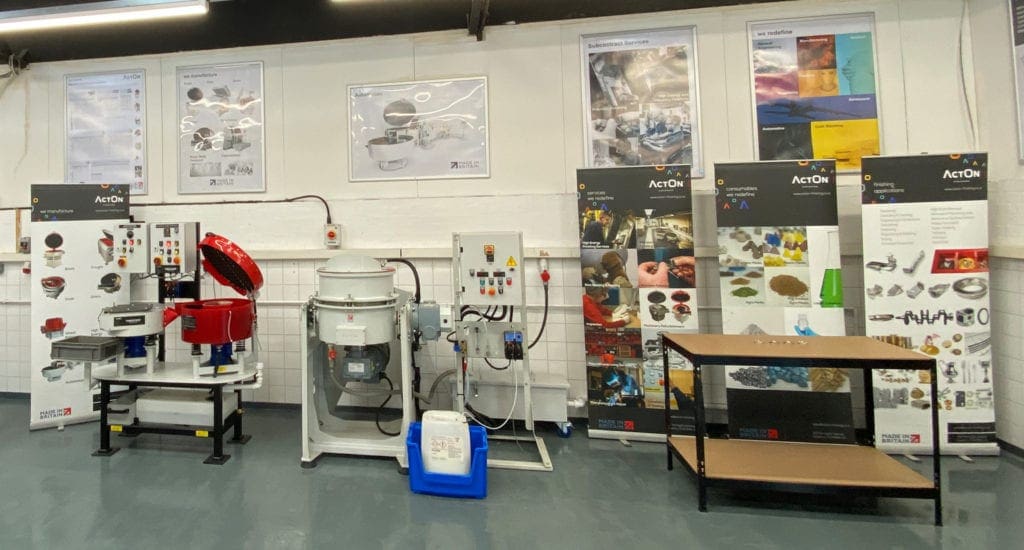
There are several problems you may encounter during the process of using your vibratory finishing machine.
From components sticking together to parts getting damaged or odour from wastewater circulation systems, it can be a frustrating process if you don’t know how to fix these problems.
To help ensure your vibratory finishing process runs as smoothly as possible, we’ve gathered together common vibratory machine troubleshooting and preventive measures you can take to target these.
Troubleshooting and Identifying Problems


1. Processing problems
Here are some problems you might encounter during the vibratory finishing process and their most common causes. A combination of processing problems and other factors can play together in mass finishing. For each part and application, several different processes can give the required result for your vibratory finishing machine.
| Problem | Most Common Cause | Other Possible Cause |
| Mass doesn’t move properly | Wrong weight setting* | Too much water; Media filling height too low; Wrong RPM; Media glazed over; Parts are oily |
| Work bowl does not start to vibrate | Wrong weight setting | Media filling height too low; Wrong RPM; Media glazed over; Parts are oily |
| Parts float on top of the media | Wrong weight setting | Too little water; Wrong RPM; Media is too large |
| Parts are damaged or bent | Media is too large | Too little water; Wrong RPM; Wrong weight setting; Too many parts in machine |
| Parts’ surface gets impinged | Too many parts in machine | Media filling height too low; Wrong RPM; Wrong weight setting; Wrong media composition; Media is too large; Wrong compound; Too little compound |
| Parts’ surface is too rough | Wrong composition/grade of media being used | Wrong RPM; Wrong weight setting; Media is too large; Wrong compound; Too little compound |
| Components stick together | Wrong compound | Too little water; Media is too large; Too little compound; Parts are oily |
| Not enough metal removal | Wrong composition/grade of media being used | Too much water; Media filling height too low; Wrong RPM; Wrong weight setting; Wrong compound; Media glazed over; Parts are oily |
| Parts become dark | Too little compound | Wrong compound; Media glazed over; Parts are oily |
| Parts are not clean | Wrong compound | Too little water; Too little compound; Media glazed over; Parts are oily |
| Parts are stained | Too little water | Wrong compound; Too little compound; Media glazed over; Parts are oily |
| Parts corrode | Too little compound | Too much water; Wrong compound |
| Too much foam | Use of wrong liquid compound | Excessive use of liquid compound to water ratio |
*Weight settings
As well as being able to adjust the throw of the motor/s by changing the degree settings of the motor/s, additional weights can be added or removed to control the amplitude, providing ultimate control over your process. Please seek advice of a vibro expert (ActOn Service Department are able to offer this service) or thoroughly read the user manual and isolate your machine before trying to make any change yourself.
2. Foam problems
Some foam is desired in vibratory finishing applications, ball burnishing only works with a lot of foam and a cleaning or deburring application needs only a little foam. This indicates enough water and compound are being used to carry the metal fines, media sludge, spent oil and any dirt to the drains.
Too much foam is normally a sign of an out of control process, the most common cause is the use of the wrong liquid compound or the excessive use of liquid compound to water ratio. Nonetheless this issue can be fixed by adjusting the process to the correct levels and/or by adding a small quantity of ActOn Antifoam to the process chamber during the course of the finishing cycle.
3. Media problems


Glazed over media is one of the most common processing problems that operators face. Every company owner, director, manager and employee are encouraged to save money for their company, but be warned, don’t follow your urge to reduce water flow and liquid compound without thinking through the consequences.
In the pursuit of saving a few pennies here and there, this can easily become an expensive mistake due to much longer processed times (more liquid company, water and electric), damaged or rusty components and ultimately this tinkering will lead to you having to replace your vibratory machine/chamber with a complete refill of new fill of media chips.
If your media appears glazed over with a shiny film and feels tactile to the touch, then it has lost its cutting affect. This means you’ll need to refill with new media, which is certainly not as cheap as making sure the water and liquid compounds are set at the correct levels and not altered.
Some reasons for glazed media:
- Not enough water (media and metal wear is not flushed out)
- Not enough or not the correct compound
- Oily or greasy parts
- Hard, dense media with closed structure (recirculation of water system)
Effects of glazed media:
- Dirty parts
- Long process times (additional water, compound and electric costs)
- No media wear
- No material removal
4. Water hardness
The water hardness has a significant impact on the process, as it affects the compound properties. Soft water can cause foam problems whilst hard water requires more compound to reach the same effect.
5. Wastewater odour problem
Waste water circulation systems that are not well maintained can develop severe bacteria growth and odour problems. Once a system is contaminated the only remedy is a complete cleaning of the system.
Preventive Maintenance
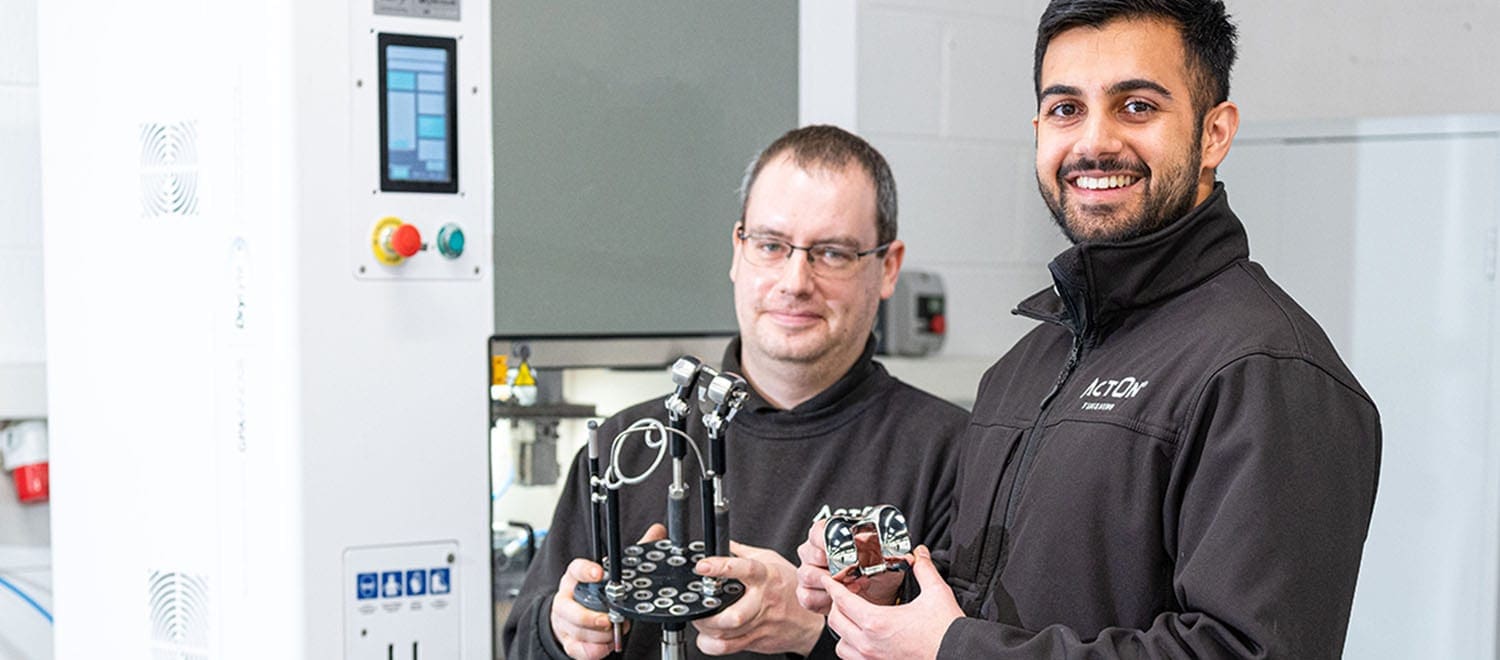

To help ensure your vibratory finishing machine continues to work properly, there are several preventative maintenance procedures you can carry out. These include:
- ActOn Finishing vibro machines offer sealed motors with long-life bearing. However, the vast majority of vibro motors used by other manufactures require greasing of the bearings on a regular basis to try and prolong their life (i.e. 5 shots from the grease gun every 1000 hours)
- Check all bolts and fixings to ensure they are tight
- Clean machine drain bung to prevent ‘hardening’ of waste solids
- Check machine for water build-up due to poor drainage
- Ensure all water and compound connections are secure
- Clean compound pump with warm water when machine is not being used for one-week or longer
- Check amplitude reading is as per process sheet
When the process time extends, you can also carry out the following preventive maintenance checks:
- Check parts loading quantities have not been exceeded
- Check media condition (size, abrasion, level, cleanliness)
- Check amplitude reading
- Check water flow rate and compound flow rate
- Check weights have not moved
- Check bowl lining has not been eroded down to the steel structure
- In the event of moving the machine, ensure media roll is in the centre of the process chamber (if not, reverse electrical phases)
Getting the most out of your vibratory finishing machine
For further information on vibratory machinery troubleshooting we recommend thoroughly reading your user manual or contacting ActOn Finishing Technical Representatives, where our team of vibratory experts are on hand to answer any questions you may have.
FAQs
What is a vibratory finishing machine?
As a common finishing method in the manufacturing industry, vibratory finishing is an efficient process used to optimise all types of small products and parts. Vibratory finishing machines help you clean and deburr products at a faster pace.
What is vibratory deburring?
Vibratory deburring removes the rough edges from parts and enables them to fit together more efficiently. This leads to fewer part rejections as well as improved safety. In addition, deburring is an important step in preparing parts for painting.
How does vibratory polishing work?
In this stage a combination of media, parts and compounds are placed in a vibrating machine. The vibrations cause the contents to move in a circular motion and the media to grind against the part to get the desired finish.
What is a tumbling barrel?
Barrel finishing, also known as barrel tumbling or vibratory finishing, is a surface improving operation in which a mixture of parts, media and compounds are placed in a six- or eight-sided barrel and rotated at a predetermined speed for the purpose of rounding corners, deburring, grinding, descaling, deflashing, improving surface finish and much more.
What are the different types of finishing?
There are several types of metal finishing such as metal plating, chemical finishing or coating, grinding, buffing, electroplating, and sandblasting. Each process has basic steps with all processes beginning with surface preparation. Metal finishing processes can include anything from technical processes to buffers.







